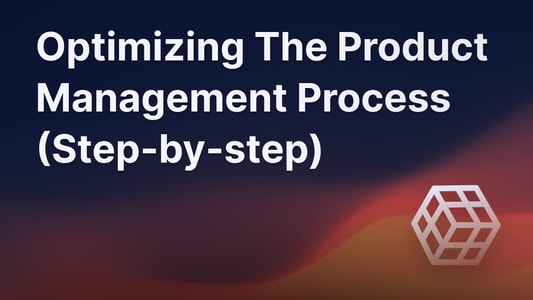Blog Product ManagementFeature Voting - Why Should You Use It & Pro Tips
Feature Voting - Why Should You Use It & Pro Tips
Feature voting is one of the most simple yet powerful ways to prioritize feature development. In this article, we'll give you a full overview of what it is and share advanced tactics for setting up and using a feature voting tool.

Feature prioritization is no joke. There are hundreds of ideas in your backlog, but which one should you focus on next?
One of the simplest ways to approach this issue is by implementing a feature voting tool.
As the name suggests - you lay out all your ideas on a list, and share it with your users who will come to vote on what's most important to them.
This will give you a nicely ordered list of what your customers seem most important, helping you prioritize what to add next.
However, this is just the surface-level overview.
In this blog, we'll explore the world of feature voting. Here, you'll find an overview of the concept, why it should be used, and advanced techniques for avoiding common mistakes.
What is feature voting?

At its core, feature voting is a democratic way to let your users or customers have a say in what you develop next. 💡
With tools like Featurebase, you can have a public or internal portal up and running in just a few minutes for both collecting user feedback and letting users vote on ideas.
That will allow you to showcase a list of features for people to vote on and also let users suggest new thoughts that everyone can vote on.
Then you can filter by topics that have the most votes in order to figure out what to prioritize next.
Overcoming the drawbacks of feature voting
An obvious drawback of just prioritizing feature development by votes is that customers aren't always equal.
The upvote of a customer who is paying $1000/mo is much more important than another customer paying just $10/mo, making just relying on the vote number entirely misleading.
For feature tracking tools to work properly, they have to take this into account and allow you to connect your customer data to those votes.
With an advanced feature voting tool like Featurebase, you can effortlessly do that and later sort ideas by customer revenue potential so ideas with votes from the most important customers will appear first.
This also makes it possible to sort ideas by customer segments (e.g. companies paying more than $300/mo) to figure out what are the most important features for certain customer groups.
Why you should use feature voting?
From the breakdown above, you can hopefully already see how powerful yet simple feature voting can be.
However, we'll also give you an overview of all the benefits when it so you can make a better decision if it's something for your company:
1. Gather feedback and measure the importance on autopilot
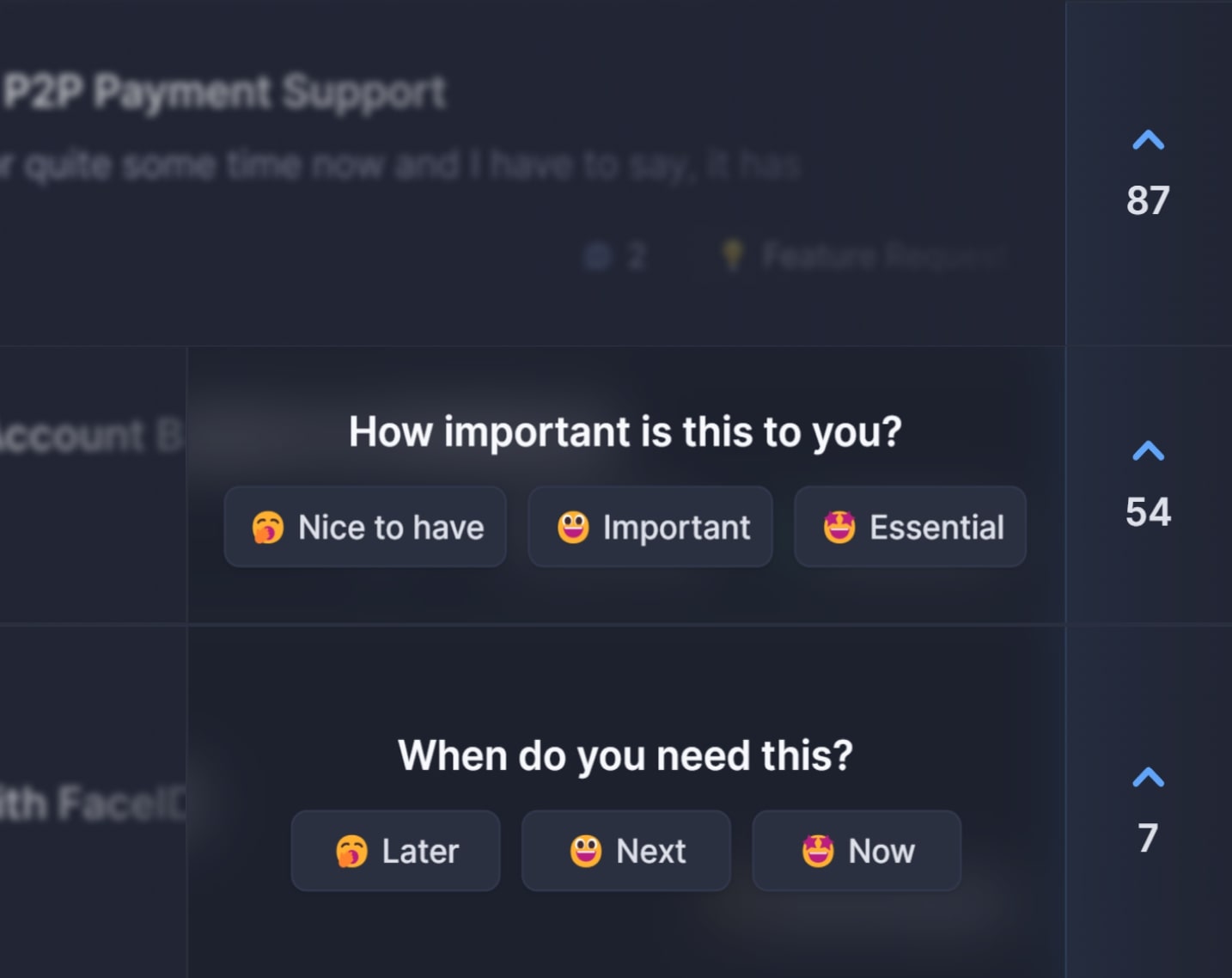
Feature voting acts like a constant feedback loop, automatically collecting insights from your user base.
By simply watching which features get the most votes, you can understand user preferences without having to set up time-consuming surveys or interviews.
It allows for async insight collection that helps product managers make informed decisions without talking with each customer individually.
2. Identify quick wins and essential features
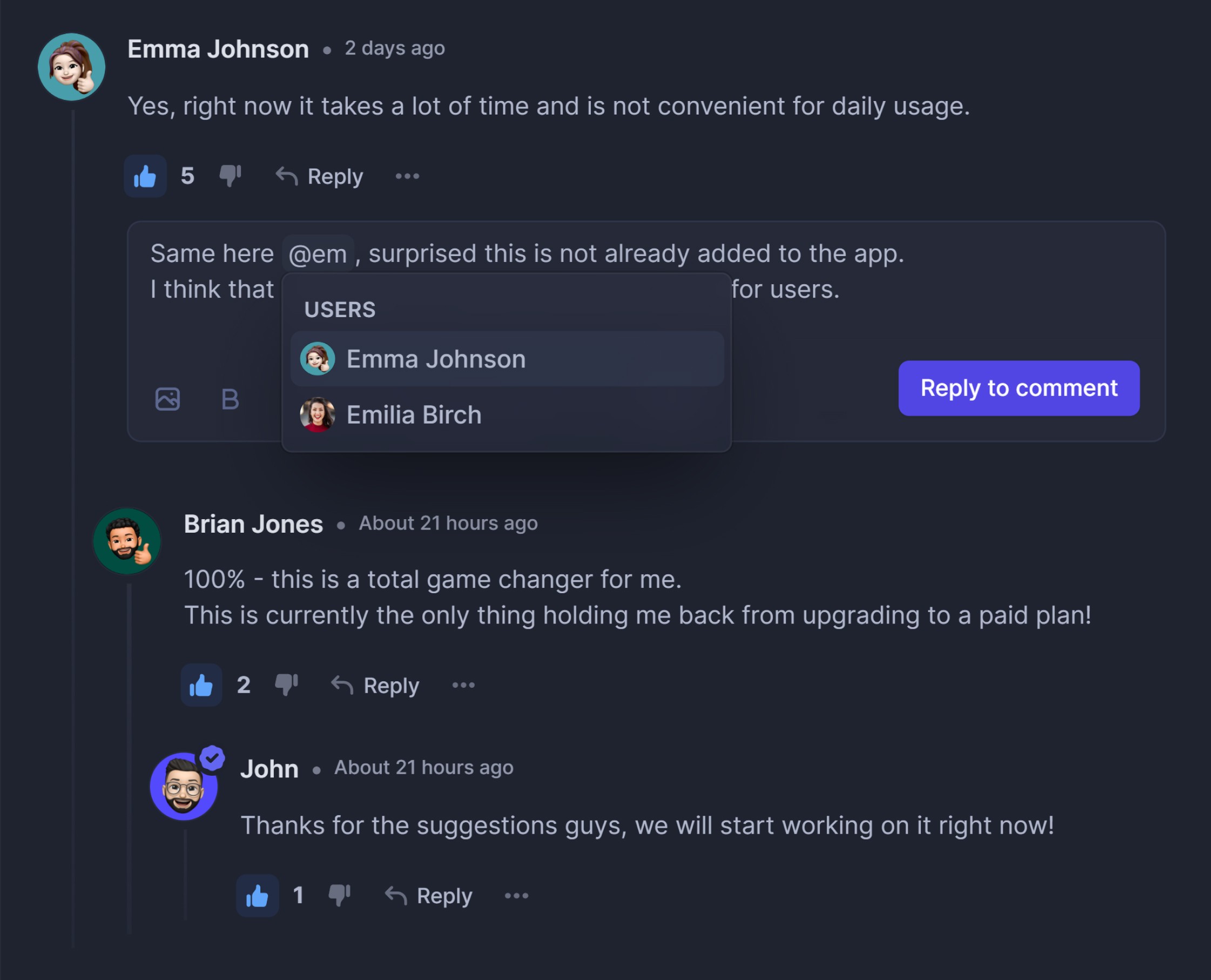
Good feature voting tools like Featurebase allow you to ask users follow-up questions to measure the importance, usage frequency, and urgency of voted features.
Most feature voting tools also support commenting on feature ideas, so you can get a quick overview of how important something is by simply looking at the comment section.
This allows you to easily spot deal breakers and identify any quick wins that you might have otherwise missed.
3. Align solutions with customer needs
It's easy to build whatever seems fun, but this often leads to something that users don't actually want.
With a feature voting tool, you can make sure that whatever feature you prioritize is actually wanted by your end users.
This also largely removes the need for user testing, as it directly reflects user interest and demand.
By focusing on the features with the highest votes, you’re essentially letting your users guide your development priorities. This approach not only saves time and resources but also increases the chances of your product's success by ensuring it meets actual user needs.
4. Understanding the needs of different customer groups
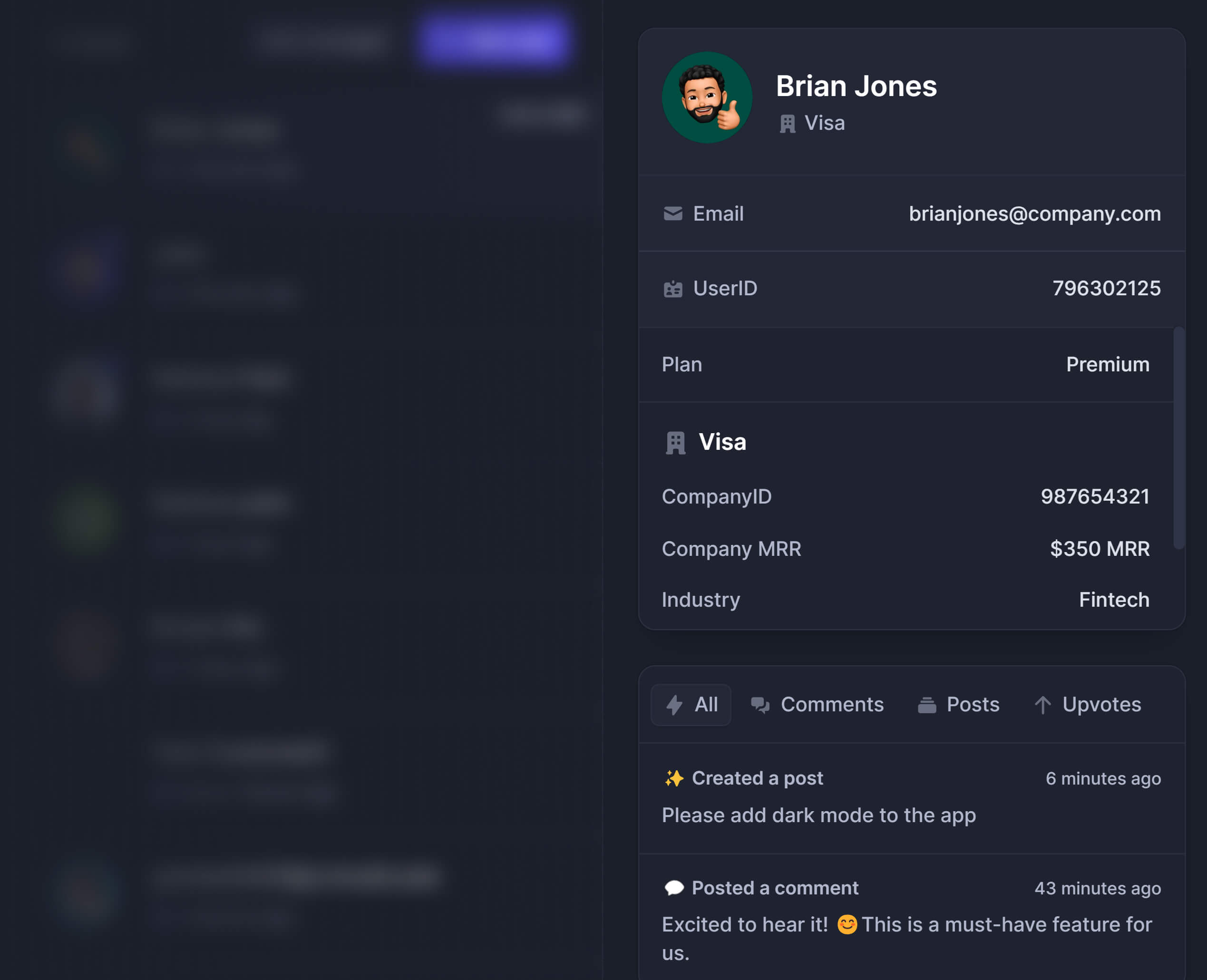
Not all users are the same, and feature voting can give you a great overview of different customer segments.
For example, imagine you run an online learning platform.
After implementing a feature voting tool, you notice that beginners overwhelmingly vote for more basic tutorials, while advanced users are asking for in-depth courses on specific topics.
This insight allows you to develop targeted content that meets the direct needs of each group.
By analyzing votes based on user revenue or usage metrics, you can tailor your development to specific groups.
5. Build customer loyalty and attract new customers
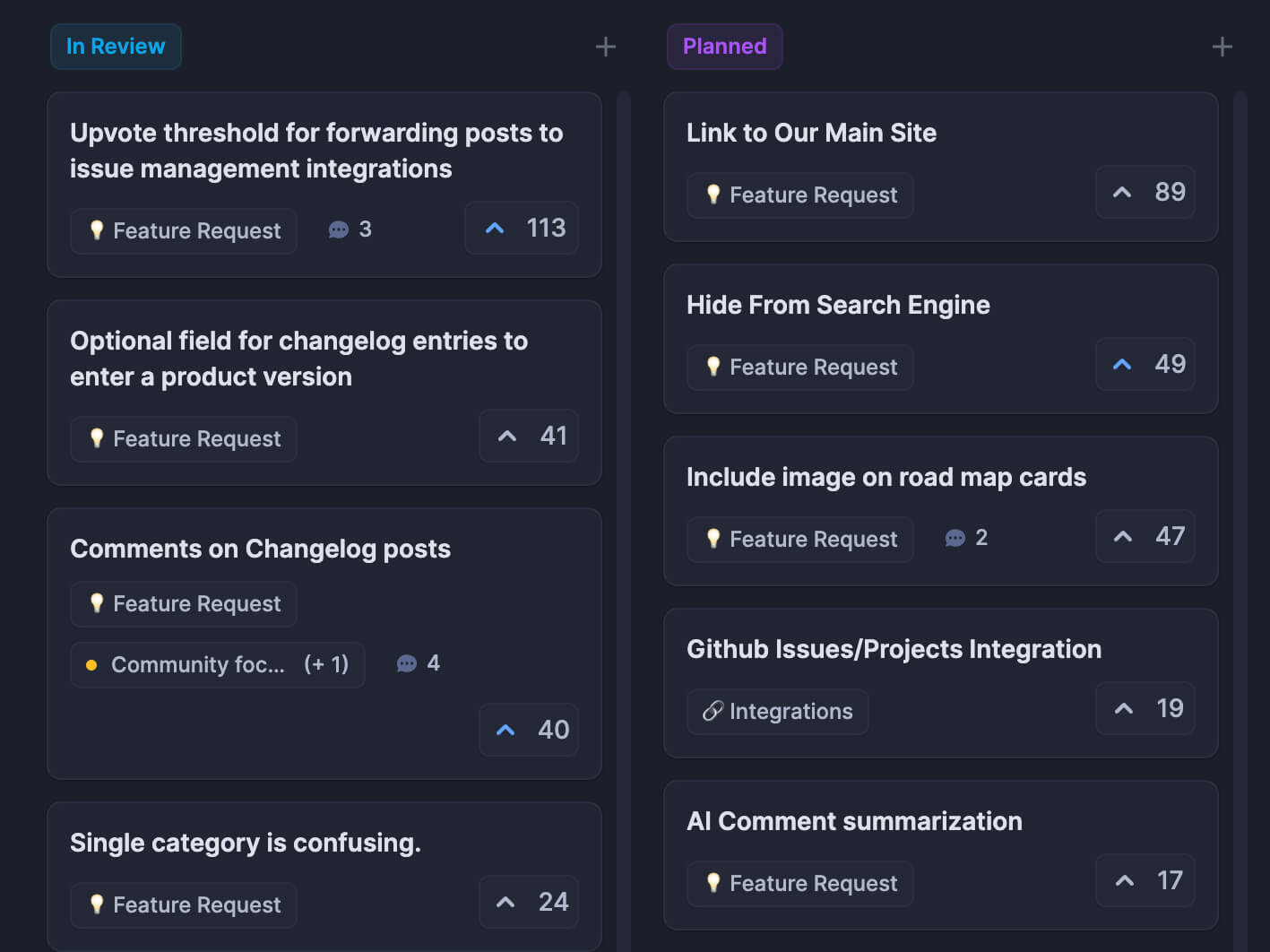
By inviting users to vote on features, you're showing them that their opinions matter.
This not only improves customer satisfaction but also helps attract new users who see a company actively engaging with its community.
Using feature voting is much more than just your roadmap prioritization strategy.
It not only streamlines your prioritization process but also strengthens your connection with your users while making sure what you develop aligns with the needs of end users.
How to set up a feature voting tool?
Setting up a feature voting tool might seem difficult at first, but it's actually very straightforward, especially with platforms like Featurebase.
Here’s a step-by-step guide to get you started:
1. Choose your tool
First things first, pick a tool.
Featurebase is an excellent choice for several reasons. It's user-friendly, offers deep customization options, and integrates seamlessly with your existing customer data and other tools.
This last point is crucial for avoiding the common pitfalls of feature voting, like weighing all votes equally regardless of customer value.
For more options, check out our post about the best feature voting tools.
2. Configure your tool
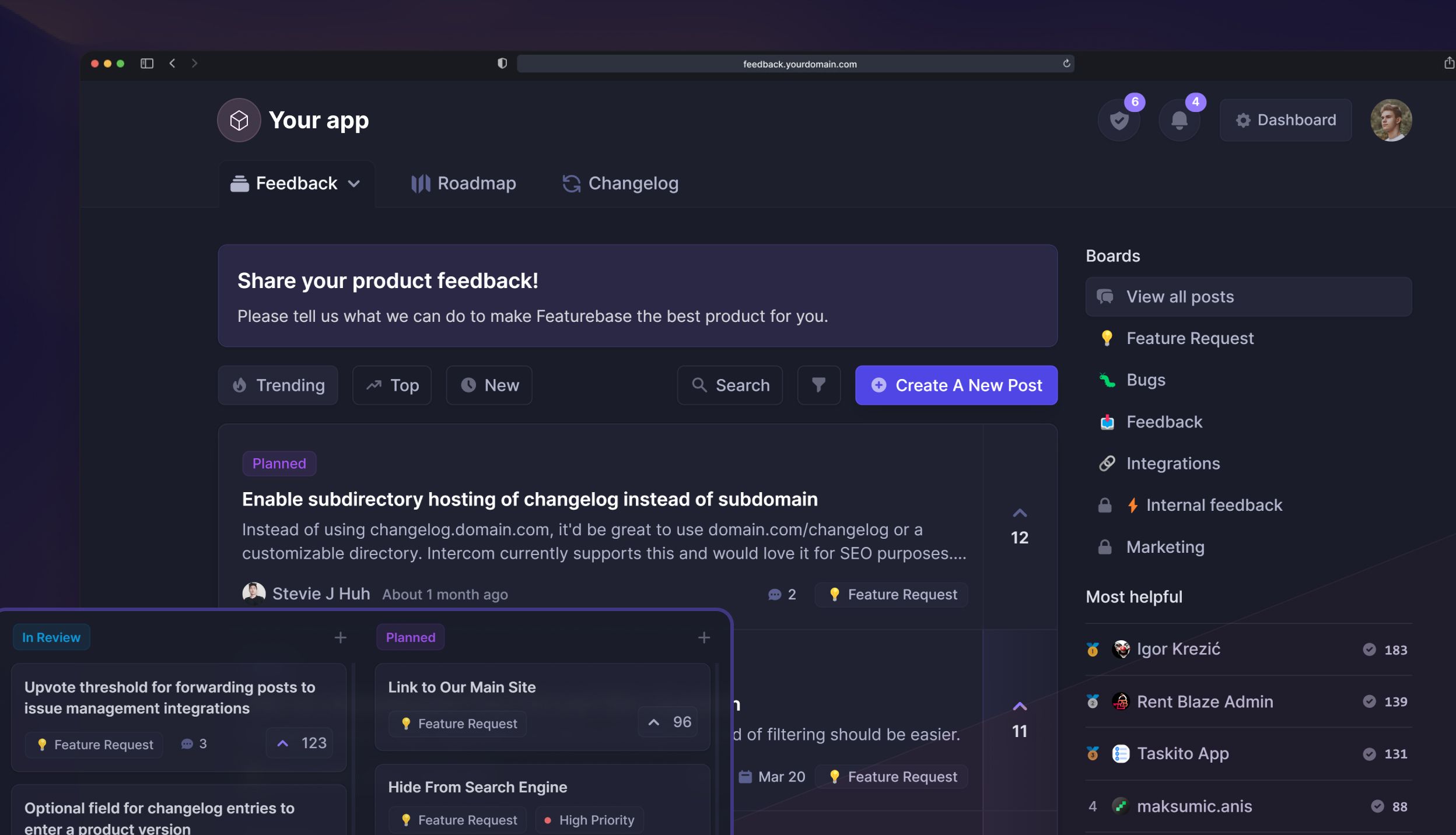
With Featurebase, setting up your feature voting portal is super simple.
We recommend setting up the following features:
- Custom domain - With the custom domain feature, you can serve your feature voting portal from your own domain (e.g. feedback.yourdomain.com).
- Logos & themes - Most feature voting tools allow you to customize the appearance of your voting portal to make sure it feels on-brand.
- Set up automatic authentication - With a tool like Featurebase, you can automatically authenticate your users so they do not have to sign up for yet another tool to vote on features.
- Sync customer data - This is where Featurebase shines. This way, you ensure that the features needed from important customers can be prioritized.
3. Share and Promote

Once your portal is up, share it with your users.
You can embed it on your website, include it in your newsletters, or share it through your social media channels.
4. Analyze and Act
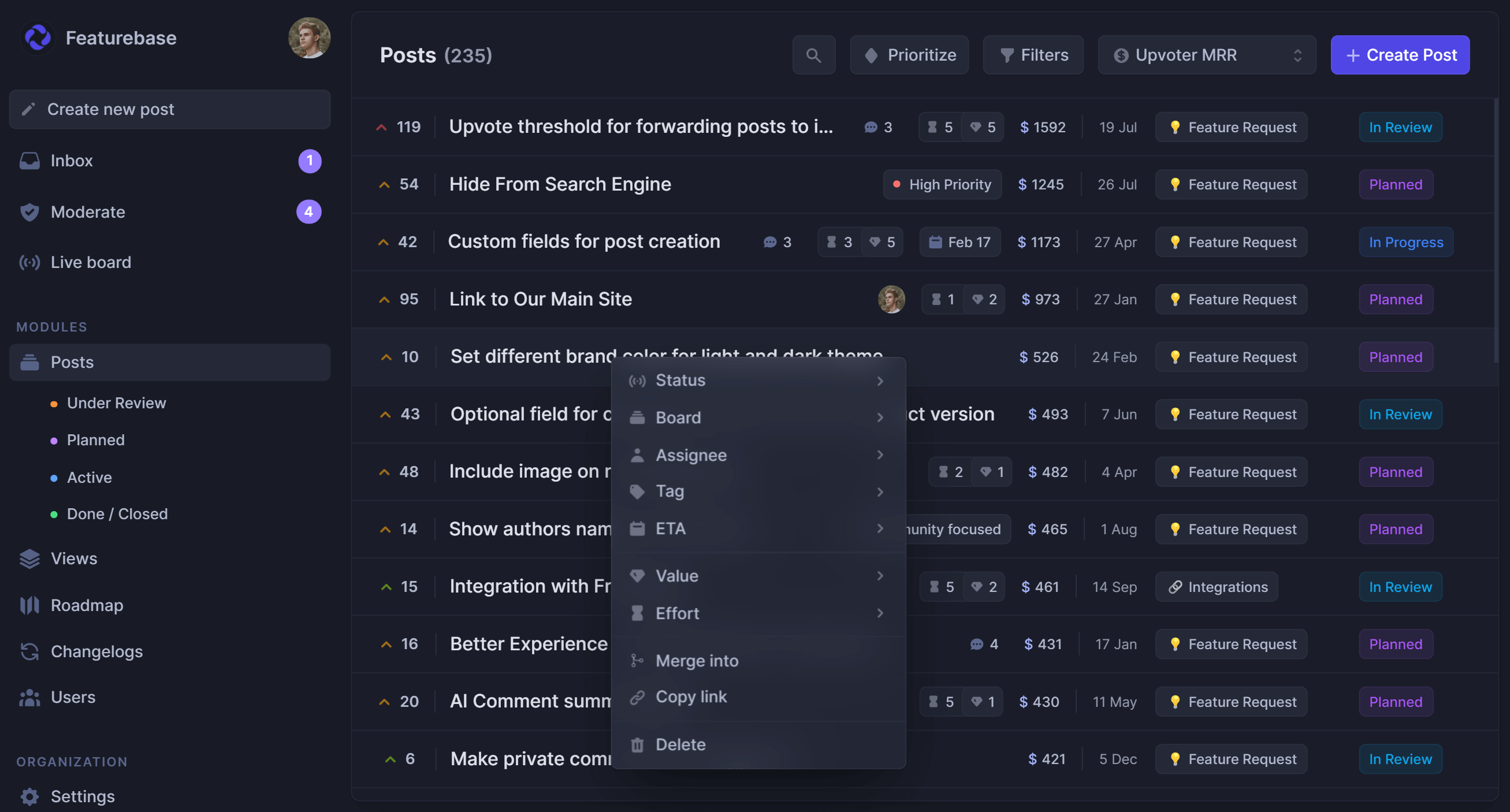
As votes come in, use Featurebase’s filtering tools to figure out what to build next.
You can prioritize features not just by the total number of votes but also by the value those features bring, thanks to the integration with your customer data.
You can also use different popular prioritization frameworks used by most product managers.
This holistic view ensures that you're making informed decisions that will benefit your most important users and your business.
5. Close the feedback loop
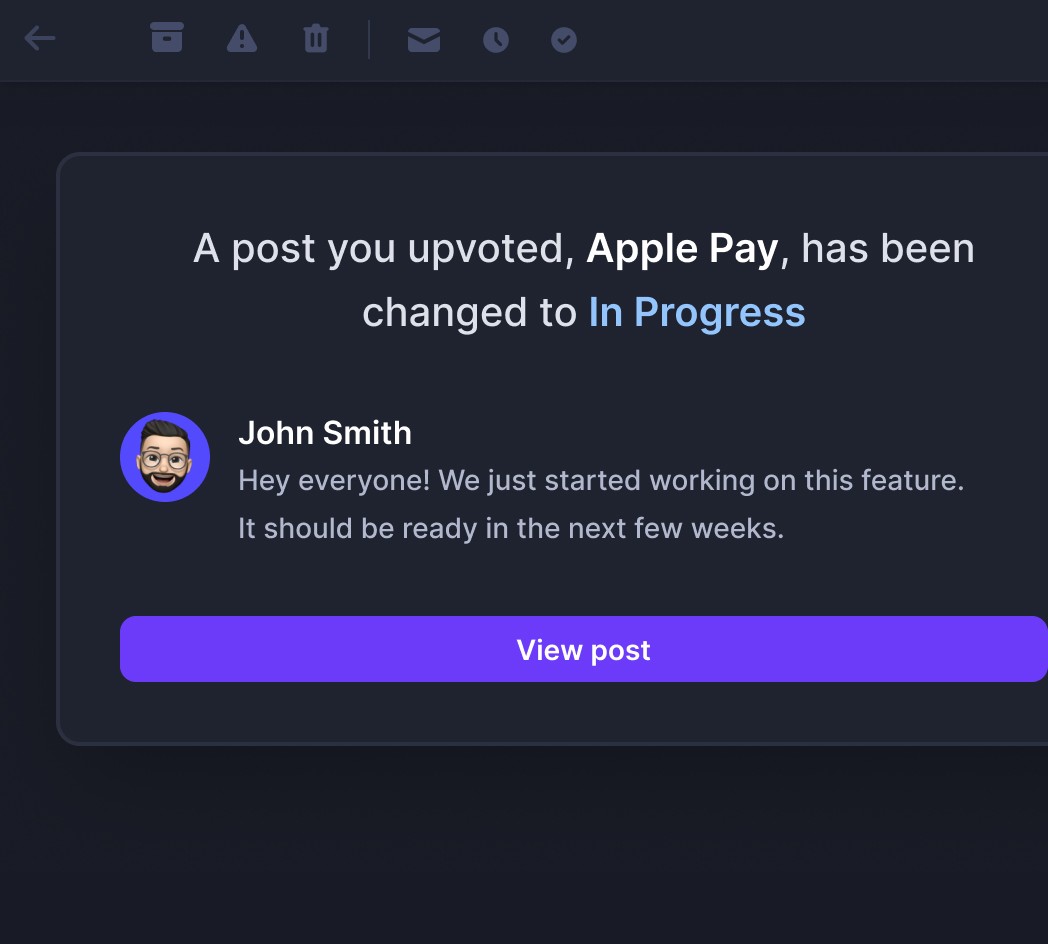
When you start working on a feature request or complete one, it's incredibly important to communicate that with your users.
Look for a tool that supports a changelog feature and status update emails to notify your customers.
Implement feature voting with Featurebase today →
Should you implement feature voting?
Feature voting isn't just about making your life easier, it's a win-win for you and your users.
Your users feel heard because they play a direct role in shaping the product & for you, it takes the guesswork out of product development.
While feature voting is awesome, it's not without its drawbacks.
For example, just relying on the vote count doesn't paint the right picture as the vote of all users is equal, while in reality, different customers can be more or less important.
Luckily with more advanced tools like Featurebase, you can avoid this issue by connecting your user data to those votes.
In conclusion, feature voting is a powerful tool in your product development arsenal.
It engages your users, clarifies your development priorities, and can make your product better match user needs.
If you're looking for an all-in-one affordable and advanced feature voting tool, then we've been working on the best tool in this industry for years at Featurebase.
Implement feature voting with Featurebase today →
FAQ for Feature Voting
What is feature voting?
Feature voting is a process where users can vote on features or improvements they'd like to see in a product or service. This approach helps prioritize development based on user demand.
How do I set up feature voting for my product?
You can set up feature voting by choosing a tool like Featurebase, configuring it with your product details, integrating your customer data, and then sharing the voting portal with your users.
Can users suggest new features, or do they only vote on existing ones?
Yes, users can both suggest new features and vote on existing ones. This ensures you're capturing a wide range of ideas and feedback directly from your user base.
How do I prevent vote manipulation or bias?
Advanced feature voting tools allow you to integrate customer data, enabling you to weigh votes based on factors like user revenue or usage patterns. This helps ensure a fairer and more balanced prioritization process.
What if a highly voted feature is not possible to implement?
Transparency is key. Communicate the challenges to your users and explain why certain features may be delayed or modified. Offering alternatives or seeking further input can also help maintain trust and engagement.
Can feature voting replace user testing?
While feature voting provides valuable insights into user preferences, it's not a replacement for user testing. Testing is crucial for evaluating usability, understanding user behavior, and identifying issues before a full-scale launch.
How often should I review and act on feature voting results?
It depends on your development cycle, but a regular review, such as monthly or quarterly, can help keep your product roadmap aligned with user expectations and market demands.
The simple feedback tool with feature voting for your customer feedback. Built-in the 🇪🇺.
© 2024 Featurebase. All rights reserved.


